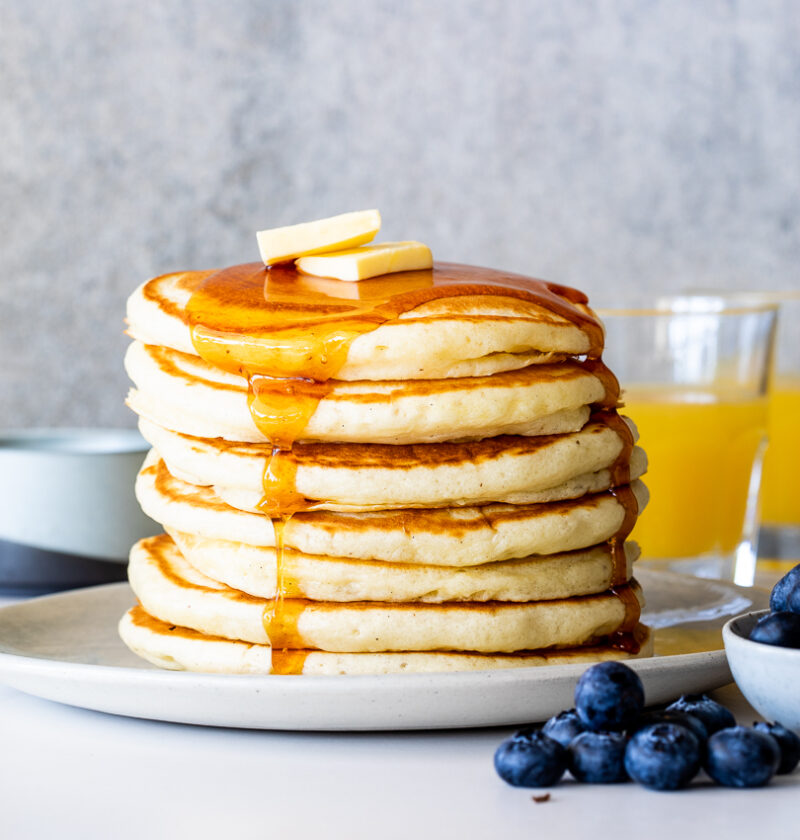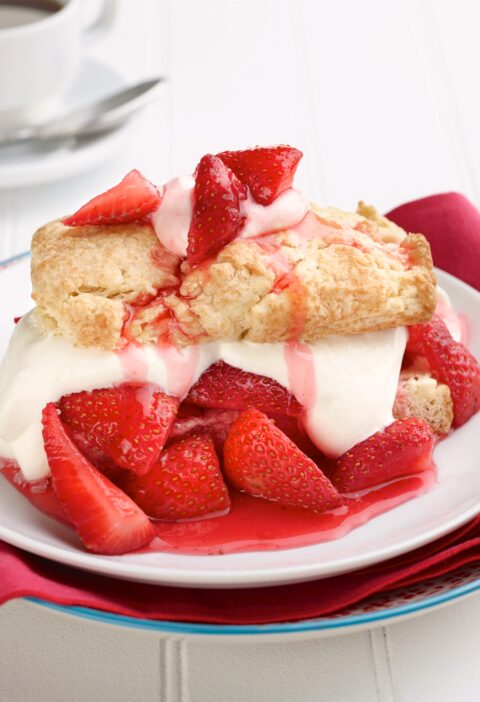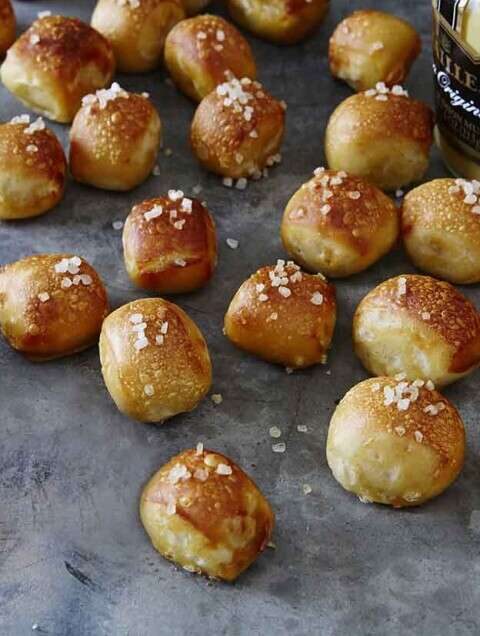Multiple scientific principals go into the creation of fluffy buttermilk pancakes. One crucial scientific component in this recipe is the choice of flour used. The most important aspect of flour that is a necessity in order to make these pancakes is the gluten it provides. Gluten is what provides the pancakes structure and provides the texture of the pancake. The amount of gluten formation that occurs is dependent on the protein content present in the choice of flour. The flour used in this recipe is All-Purpose flour, which has a protein content ranging from 9 – 12 percent. This is perfect for pancakes because it stimulates light gluten formation, which allows the pancakes to remain light and fluffy while at the same time maintaining their structure.
Another important scientific component of this recipe comes from the two leavening agents used: baking soda and baking powder. Baking soda is a compound, sodium bicarbonate, that generates a leavening reaction when mixed with a liquid acid. When the baking soda dissolves in the acidic liquid, the bicarbonate ions react with the acid to create carbon dioxide gas. These gas bubbles is what provides the lift in baked goods. In this recipe, the acidic ingredient added to the recipe to kickstart the reaction is Buttermilk, which has a pH ranging from 4-5. The other leavening agent used in this recipe is baking powder, which is a mixture of sodium bicarbonate and acidic salts. Baking powder is used as well since it has the ability to react twice during the cooking process. The first reaction occurs when it comes into contact with a liquid, and the second occurs during the heating process. As the pancakes are cooking on the skillet, the baking powder begins to release gas again. This reaction provides the sought after fluffy texture of the pancakes.
Outside the importance of the leavening reactions, another key reaction occurring in this recipe is the Maillard Browning reaction. The Maillard Browning reaction is the browning process in food that occurs as a result of a series of reactions between a reducing sugar and an amino acid. These reactions include “condensation, polymerization, degradation, cyclization, etc…” (Murata). The reaction is not only responsible for the browning of foods, but also creates “hundreds of aromatic compounds” that are responsible for the pleasant odor created during the cooking process. In this recipe, the browning process occurs as a result of the proteins present in the flour, eggs, and buttermilk and the sugar present in the recipe from the granulated sugar added. The browning is also aided by the presence of baking soda added since more alkaline conditions increase the rate of the reaction. One tsp of baking soda is used to create the ideal browning color because if too much or too little is added, the color of the pancakes would be unideal.
The eggs in this recipe are vital in creating the fluffy texture of the pancakes. The eggs in this recipe are meant to be lightly beaten, and the reason for this is to lessen the amount of air that is whipped into the eggs and to prevent the whites from fully separating from the yolks. The eggs will get broken up further later in the recipe when the liquid ingredients are mixed into the dry ingredients.
The process of the recipe is also a result of scientific processes. The pancakes are instructed to be baked on a griddle, which utilizes conduction as its main form of heat transfer. This insures that each side of the pancake is baked evenly during the baking process. The recipe also instructs for the pancake batter to rest for 10 minuets before baking on the griddle. The purpose of this is to increase the fluffiness of the pancakes, which occurs because the flour has more time to absorb the liquid ingredients in the recipe. As the batter sits, the flour will begin to release “starches and proteins, giving a nice lift to your eventual pancakes” (Peng). Another aspect of the process is to mix in the liquid ingredients to the dry ingredients. The order of this is specific because if you add dry ingredients to the liquid ingredients all at once, the dry ingredients can clump together easily. This could lead to dry pockets of flour to form in the final pancakes.


